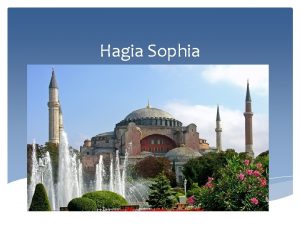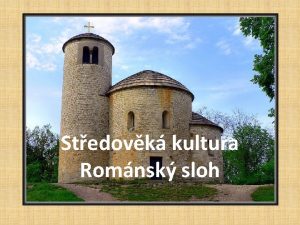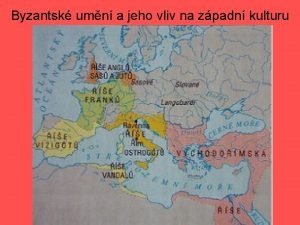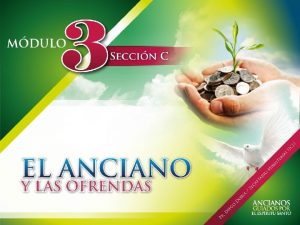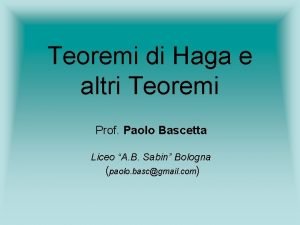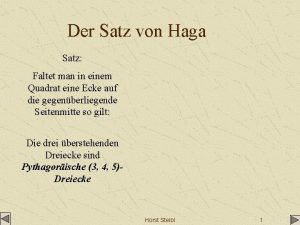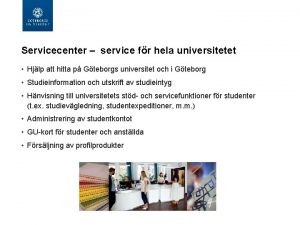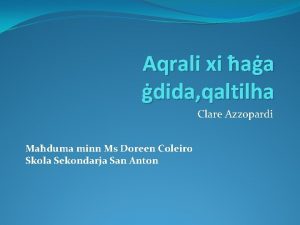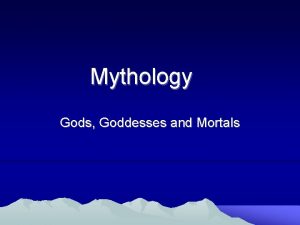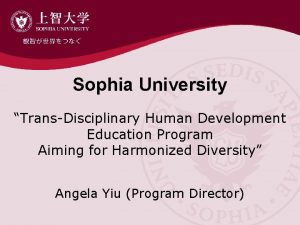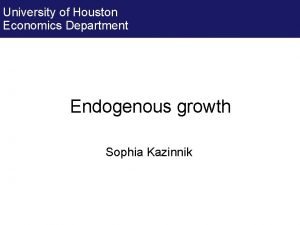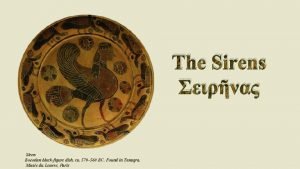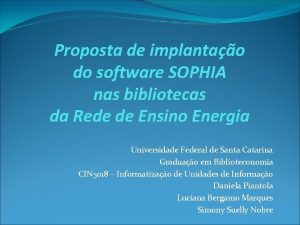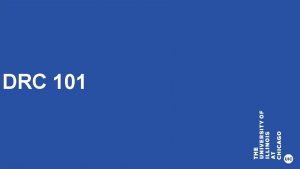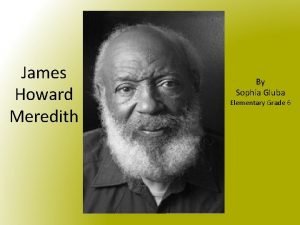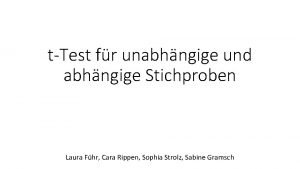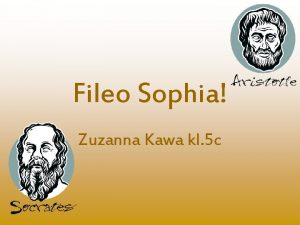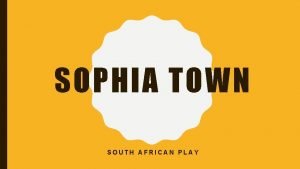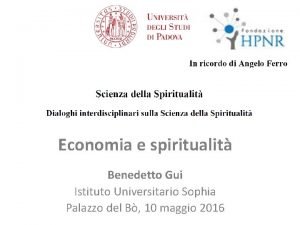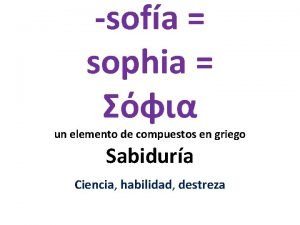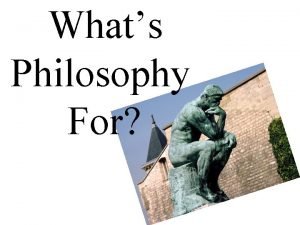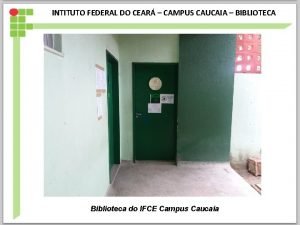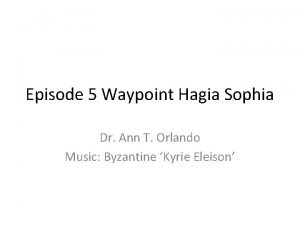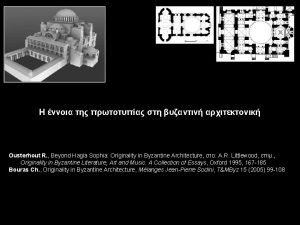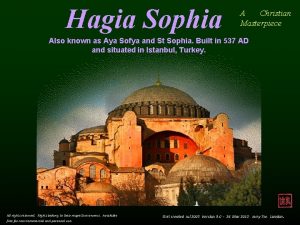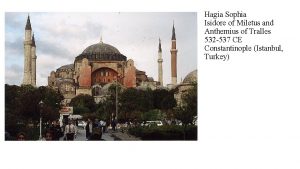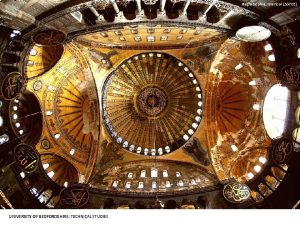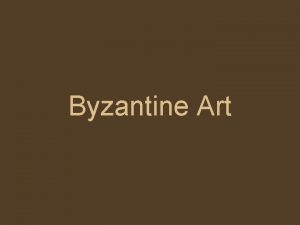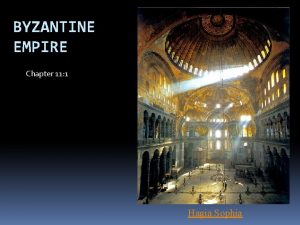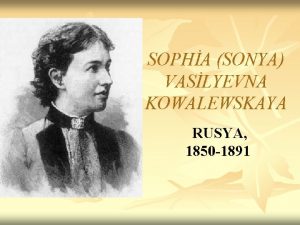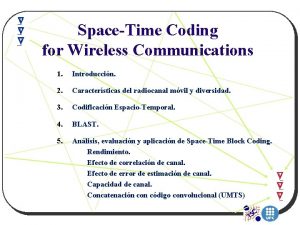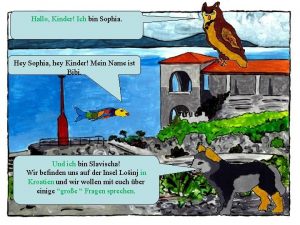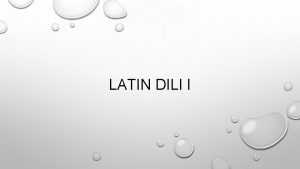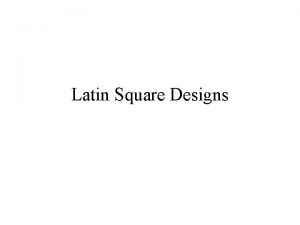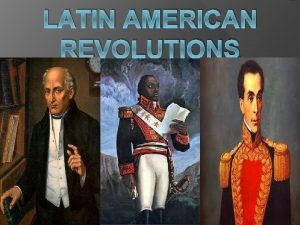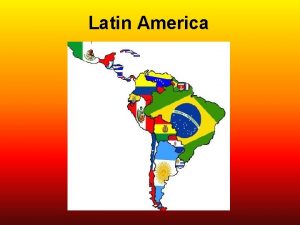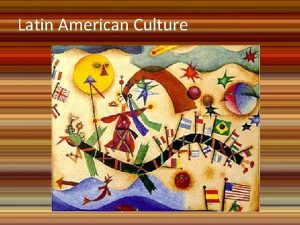THE HAGIA SOPHIA Greek Romanized Haga Sopha Latin




































- Slides: 36

THE HAGIA SOPHIA Greek: Ἁγία Σοφία Romanized: Hagía Sophía Latin: Sancta Sophia, lit. 'Holy Wisdom' Turkish: Ayasofya-i Kebir Cami-i Şerifi Officially: The Hagia Sophia Grand Mosque A Return to Religion By O. P.

Contents � PERIODS OF HAGIA SOPHIA � ARCHITECTURAL FEATURES � MYSTERIES � POLITICAL ISSUES

GREAT TEMPLE OF HAGIA SOPHIA (BEFORE)

GREAT TEMPLE OF HAGIA SOPHIA (AFTER)

FACTS � Hagia Sophia is one of the most important monuments of the ancient world, the most spectacular religious building in Istanbul (Constantinople), also called as the 8 th wonder of the world. � Hagia Sophia, a remarkable achievement in the history of architecture. A living proof of mankind's revolt against the laws of physics. A monument whose importance transcends borders. As one of UNESCO's World Cultural Heritage sites, Hagia Sophia continues to attract millions with its majestic grandeur and beauty. � Hagia Sophia is so magnificent in appearance that people of the time believed that the church could not have been built by human hands alone but only with the help of divine support. � Dominating Istanbul's skyline, this quaint edifice has been expanded and restored several times throughout the centuries. Hagia Sophia has always been unique as an architectural piece from the first day it was built. � Hagia Sophia is not only renowned for its magnificent religious architecture but also for its superb exquisite Byzantine mosaics and fine examples of unique Ottoman calligraphy.

FACTS (Cont. ) � Hagia Sophia is the only building in the world that served to three religions in order ; Pagan, Christian Orthodox and Sunni Islam. � Hagia Sophia was built by the order of the Eastern Roman emperor Justinian at the 6 th century AD on top of a pagan temple. � Relics such as nails from the true cross and the shroud of Mary were some of the very important treasures of the church until the attack of the crusaders. � It is believed that the greatness of the building effected Russia in a way to choose Orthodox Christianity rather than Catholicism. � Inside Hagia Sophia, there are columns, doors, marbles and different other artifacts from earlier civilizations dating back to 5 th century BC.

PERIODS OF HAGIA SOPHIA � � � � � Pagan Temple ( - 325 ): The original church on the site of the Hagia Sophia is said to have been ordered to be built by Constantine I in 325 on the foundations of a pagan temple. Church ( 537 – 1453 ): Built by the order of Byzantine Emperor Justinian I in the 6 th century, Hagia Sophia, the Church of Holy Spirit, includes pagan pillars taken from Ephesus and the Temple of Artemis and precious mosaics of Christianity and Islam. This great temple was dedicated to the Holy Spirit (Sophia) in the trinity doctrine of Christianity. The structure now standing is essentially the 6 th-century edifice, although an earthquake caused a partial collapse of the dome in 558 and there were two further partial collapses, after which it was rebuilt to a smaller scale and the whole church reinforced from the outside. It was restored again in the mid-14 th century. For more than a millennium it was the Cathedral of the Ecumenical Patriarchate of Constantinople. It was looted in 1204 by the Venetians and the Crusaders on the Fourth Crusade. Hagia Sophia is also one of the largest cathedrals in the world having special significance for the Orthodox community. Mosque ( 1453 – 1935 ): The church was converted into a mosque after the Ottoman Conquest of Istanbul in 1453. Ottomans buttressed the edifice with architectural elements displaying Ottoman character. According to Muslim traditions, when an army conquest a new city/country, the soliders have a right to pilllage for 2 days. On the other hand, if the city falls then they won’t have a right to pillage. Hagia Sophia was in Sultan Mehmet’s mind’s eye before conquest. He did not want to give right of conquest to Janissary (Ottoman Army) to pluck Hagia Sophia that’s why he said that the city of Constantin (Istanbul) had fallen and Janissary members did not have any right of conquest on the city (especially Hagia Sophia). However, this is the only toleration on Hagia Sophia. When calendars had shown June 1453 it had already transfered into mosque. Mosque elements were added inside. The southern courtyard includes mausoleums of Ottoman Sultans. The original baptistery was also converted into a mausoleum for Ottoman Sultans. Propet Muhammad also reported that he had seen a model of the Hagia Sophia in heaven when he was taken by the Angel Gabriel one night. Museum ( 1935 – 2020 ): After Ottoman Empire collapse and Turkish Republic establishment, It remained in use as a mosque until as recently as 1931, when it was closed down for four years to be reopened as a museum in 1935 by the first President of Turkey, Mustafa Kemal Ataturk. Mosque ( 2020 – ): Turkey’s highest administrative court, the council of state, paved the way for the move after it ruled unanimously on 24 th of July to annul a 1934 cabinet decree that stripped the 1, 500 -year-old building of its religious status.

ARCHITECTURAL FEATURES The original floral and geometrical mosaic decorations survived from the 7 th century. Figurative mosaics date back to post iconoclastic period. There are 8 discs made of leather and hung from the splendid dome of the Hagia Sophia. These fine examples of Ottoman calligraphy remind us the historical period during which the building was used as a mosque. � � � � Restored Christian mosaics made of gold, silver, terracotta, glass, and coloured stones Minarets in white, pink, and yellow marble Ceiling frescoes, photos, paintings, and art Key Islamic symbols including marble cubes, bronze lamps, calligraphy panels Over 100 structural and decorative columns in total The world-famous 55 meters free-standing dome Iconic museum collections and stone artifacts from the church and tombs

PAGAN SYMBOLS

Cross & trident symbol Most of the Christian features were removed but many others are still there, together with some pagan symbols that we can often find in churches. This is because Christians have adopted and converted pagan symbols since the early times of its expansion. The trident and the dolphins (on the right) are related to the God Neptune (or Poseidon in Greek) and the dolphins are always associated to this God as well as to the legend of Atlantis.

Temple Signs on The Entrance On the main gate there are embossed columns, indicating the entrance to the temple.

Virgin Mary & Jesus, as Isis & Horus The iconography of Virgin Mary and Jesus come from the ancient Egyptian tradition: They are in fact the representation of Goddess Isis and Horus. The halo refers to the God Sun (Ra in ancient Egyptian mythology).

A typical Pagan altar in Hagia Sophia In the Pagan rituals, the altar was (is) used for offers to the Deities.

Trident & Dolphins, Symbols of Atlantis, in Hagia Sophia Another representation of tridents and dolphins, indicating some form of worship to Neptune/Poseidon and a reference to Atlantis.

The erased cross and the Mother Goddess symbol On the upper gallery of Hagia Sophia you can find numerous crosses (the lateral parts were deleted by the Muslims) with the lower (round) part still indicating the symbol of Mother Goddess.

The symbol of the sun, right at the ceremony place Just on the side of the ceremony place, the red circle in the decorations refers to the Sun or Solar Disc (Ra, in the Egyptian mythology).

Monograms on the columns The one in the middle shows an Ankh (Egyptian key of life) On each column on the upper gallery there is a capital with monograms. This one in particular is unique – it represents the Ankh (the Egyptian key of life). Who put these symbols up there? It’s a mystery.

MOSAICS



The outer and inner entrance have fine early Christian mosaics. Of particular interest is the 9 th-century figure of Christ as Pantocrator over the Imperial Doorway (the main entranceway) and the mosaic of Christ Enthroned flanked by Empress Zoe and Emperor Constantine IX in the upper gallery.

Deesis Mosaic The Hagia Sophia has several Christian mosaics. One of these known as the Deesis Mosaic, which was created in 1264 AD, is of particular interest because it has been said that an image of Jesus is not of Christ but Apollonius of Tyana.


Above the main exit doorway, this stunning 11 th-century mosaic depicts the Virgin Mary flanked by Byzantine Emperors Constantine the Great to her right and Justinian to her left. Constantine is offering the virgin Constantinople, while Justinian is offering the Hagia Sophia to her.

MYSTERIES

Dan Brown’s Inferno & The Hagia Sophia World famous author of the bestsellers “The Da Vinci Code” and “Angels and Demons” refers in his latest historical fiction Inferno to Hagia Sophia � At his new novel Inferno, Dan Brown’s protagonist Iconographer Robert Langdon reveals to Sienna Brooks – a young genius doctor- “we are in the wrong country”, and starts following the clues that would take him to Hagia Sophia to solve the secret and to save the world. � � Being an important world heritage, 1500 years old Hagia Sophia became the inspiration to many discussions, books, movies and films with a lot of mysteries yet still waiting to be uncovered. At the end of the novel Inferno, we will learn if Professor Langdon will be able reveal the secrets of Hagia Sophia. Apart from the novel, what makes Hagia Sophia so mysterious?

‘Solomon, I have surpassed you!’ On the day when the Hagia Sophia basilica was first opened in 537 A. D. , the Byzantine emperor Justinian is supposed to have entered the building and cried out, “Solomon, I have surpassed you!”, oral tradition records. � The reference in the Bible is to the building by King Solomon of a temple in Jerusalem. �

Wood from Noah’s Ark The wood from which the door known as the Emperor Door is made, is believed to have been taken from Noah’s Ark. In support of this, it is known that Emperor Heraclius went in search of the Ark in the 7 th century.

Weeping Column One of the Hagia Sophia's most famous components is this column in the northern side aisle of the Imperial Door. The column has bronze plates on the lower section and a hole in the middle of one of these, and the faithful who seek healing put their thumbs or fingers in the hole then rub the affected area of their bodies. It is said that Emperor Justinian once cured a terrible headache by merely leaning on this column. The moistness is said to be the tears of the Virgin Mary. Another legend says that the dampness began after St Gregory the Miracle Worker appeared there in 1200.

Seraphim Restoration of the Hagia Sophia museum in Istanbul, Turkey, has revealed the face of a seraph angel mosaic, thought to be more than 700 years old. Also known as cherubim or cherub, in Hebrew, Seraphim means ‘’the burning ones’’ because of their closeness to the throne of God. Last seen by Swiss architect Gaspare Fossati 160 years ago during his own restoration, the image has been obscured by plaster and metalwork since then The exceptional mosaic’s discovery marks the removal of scaffolding that has been standing in the former basilica for 16 years. The dome is punctuated by four seraphim, regarded in Christianity as the highest form of angel, whose six large wings symbolise the six days it took to create the Earth. The striking portrayal of the face - which is around one meter wide - is the first part of four angel mosaics thought to be on the dome; the remainder of which have yet to be revealed. The Seraphim angel seems to be looking at you from all over Hagia Sophia.

POLITICS

Criticising the move � � � In the runup to the Turkish court’s decision, Turkey’s international allies and foes alike criticised the move. It has further soured tensions with neighbouring Greece, which claims the building as an important part of its own history. The Greek culture minister, Lina Mendoni, called the decision an “open provocation to the civilised world” in a statement. “Hagia Sophia, located on Turkey’s territory, in Istanbul, is a monument to all mankind, regardless of religion. The nationalism shown by President Erdoğan … leads his country back six centuries, ” she said. Cyprus’s foreign minister, Nikos Christodoulides, wrote on Twitter that Cyprus “strongly condemns Turkey’s actions on Hagia Sophia in its effort to distract domestic opinion and calls on Turkey to respect its international obligations”. Ecumenical Patriarch Bartholomew, the spiritual head of 300 million Orthodox Christians, warned before the ruling that altering the status of the building would fracture the eastern and western worlds. Russia’s Orthodox church said turning it into a mosque was “unacceptable”. Last month the US secretary of state, Mike Pompeo, said any change would diminish the Hagia Sophia’s ability “to serve humanity as a much-needed bridge between those of differing faith, traditions and cultures”. Unesco, too, has said any changes to the building’s status must be reviewed by its world heritage committee.

During the building's tenure as a working mosque, mosaics were covered up under whitewash, but reconstruction work since 1931, when the Hagia Sophia became a museum, has mostly exposed these beautiful artworks once more.

The museum turned mosque at the heart of an ideological battle.

REFERENCES For much more detailed information please visit references: � � � � https: //www. britannica. com/topic/Hagia-Sophia https: //en. wikipedia. org/wiki/Sack_of_Constantinople https: //www. telegraph. co. uk/comment/columnists/christopherhowse/8026330/Sacred-Mysteries-Anappointment-with-an-angel-at-Hagia-Sophia. html https: //www. theguardian. com/world/2020/jul/10/turkey-court-ruling-paves-way-for-istanbuls-ayasofya-to-revertto-mosque https: //mybyzantine. wordpress. com/2010/12/30/what-secrets-are-hidden-under-hagia-sophia/ https: //www. pallasweb. com/deesis/hagiasophia. html https: //www. pallasweb. com/deesis/seraphim-mosaic-uncovered-in-hagia-sophia. html https: //www. pallasweb. com/deesis/mosaics-room-over-vestibule-hagia-sophia. html https: //www. ancient-origins. net/ancient-places-asia/hagia-sophia-istanbul-secrets-god-003133 https: //en. wikipedia. org/wiki/Hagia_Sophia https: //www. hurriyetdailynews. com/the-many-legends-of-the-hagia-sophia-72796 https: //www. planetware. com/istanbul/hagia-sophia-ayasofya-tr-is-iohs. htm https: //www. travelreportage. com/2012/07/01/pagan-symbols-in-hagia-sophia/ https: //www. hagiasophia. com/hagia-sophia-at-dan-browns-inferno/ Deesis Mosaic Photo: Mi. Gowa � Weeping Column at the Hagia Sophia Photo: Chris Brown �

THANK YOU
 Hagia sophia importance
Hagia sophia importance Autodesk sketchbook wood texture
Autodesk sketchbook wood texture Hagia sofia půdorys
Hagia sofia půdorys Hagia sofia půdorys
Hagia sofia půdorys Jehova te oiga en el dia del conflicto
Jehova te oiga en el dia del conflicto Varas graduadas
Varas graduadas Saglietti corrado
Saglietti corrado Satz von haga
Satz von haga Uta servicecenter
Uta servicecenter Hága péter konyhafőnök
Hága péter konyhafőnök Aqrali xi haga gdida
Aqrali xi haga gdida What is the greek miracle in greek mythology
What is the greek miracle in greek mythology Sophia cheng accident
Sophia cheng accident Jerome believes that his 4-year-old grandson
Jerome believes that his 4-year-old grandson Natuvion sophia
Natuvion sophia Holy sophia university
Holy sophia university Sophia pellitteri
Sophia pellitteri Sophia ananiadou
Sophia ananiadou Euler equation economics
Euler equation economics Sirens
Sirens Venus hammink
Venus hammink Sophia software
Sophia software Drc-101
Drc-101 James howard meredith
James howard meredith Sophia pandey
Sophia pandey Abhängiger t test
Abhängiger t test Fileo sophia
Fileo sophia Biografia sophia de mello breyner andresen
Biografia sophia de mello breyner andresen Sophiatown summary pdf
Sophiatown summary pdf Istituto universitario sophia
Istituto universitario sophia Sophia duval
Sophia duval Sofía griego
Sofía griego Sophia dilbert
Sophia dilbert Philos and sophia
Philos and sophia Philia sophia philia nikea
Philia sophia philia nikea Sophia biblioteca ifce
Sophia biblioteca ifce Nadace sophia
Nadace sophia
